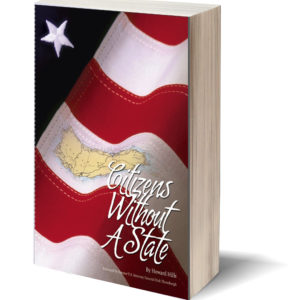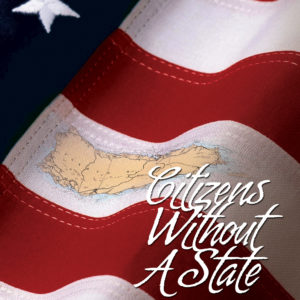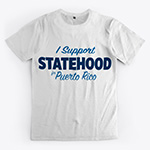What do Greenland and Puerto Rico have in common?
Early history
Greenland shows evidence of human habitation for thousands of years, but it is thought that the original inhabitants died out or left as the temperature of Greenland dropped during the Little Ice Age. Successive waves of indigenous people from North America moved into Greenland, living in the harsh climate with varying degrees of success. Around 900, Vikings visited, including Eric the Red who sailed from Iceland. He named the place “Greenland” in spite of the fact that it was covered with ice, thinking that the name would lure settlers from Scandinavia. The ruse did not work, but roughly 2,000 Viking settlers lived in Greenland until the Little Ice Age in the 1300s. Ships from Scandinavia stopped visiting Greenland and the settlements were abandoned. The last written record from that community dates from 1408.
Denmark, however, believed that the Norsemen were still living in Greenland and continued to claim Greenland. Communication between countries was not easy during the Middle Ages, so the Danish were not being unreasonable when they assumed the early Vikings might still be living in Greenland as well as in Iceland. In the 1400s, various European nations headed to the Arctic in search of a Northwest Passage to Asia, just as they tired to find a sea route to Asia by sailing west — to what became the Americas. Both Greenland and Puerto Rico were perceived as valuable in Europe at that time, so Denmark staunchly continued to claim Greenland. In 1721, Denmark sent a missionary expedition to Greenland. They feared that the Vikings might have returned to paganism in the centuries that they had been out of touch with the mother country.
The Danish missionaries found no Danish people in Greenland, but they went ahead and baptized the Inuit people who were living there. Denmark, learning of the failure of the colony they thought was thriving in Greenland, sent more colonists to support their claim on the island. They had also gotten control of some Caribbean colonies which had been part of the Dutch West Indies. They were known as the Danish West Indies, and included what is now the U.S. Virgin Islands. This was during the time when Europe was most invested in empire building, and Denmark was following the path taken by other European nations, acquiring territories in the New World.
Meanwhile, Puerto Rico, first inhabited by Arawak people known as the Taino, was claimed and colonized by Spain. Both Denmark and Spain were having their own conflicts in Europe during this time, with changes in their borders and challenges to their overseas possessions. In 1898, Spain ceded Puerto Rico to the United States in the aftermath of the Spanish-American War.
Exploration of both the Americas and the Arctic went on for centuries, and in 1888, the first land crossing of Greenland was accomplished. American explorers reached the northern edge of Greenland. which had never previously been mapped, and the United States began to think of making a claim on Greenland.
In both Puerto Rico and Greenland, modern studies of DNA show mixtures of indigenous and colonizers’ heritage.
The 20th century
In 1917, the United States bought the U.S. Virgin Islands from Denmark. Secretary of State William Henry Seward had been trying to get them from Denmark since 1867. Seward wanted the United States to control all of North America and the Caribbean. he was followed by John Hay as Secretary of State, and Hay also wanted the Panama Canal. The next Secretary of State, Robert Lansing, was not only interested in expanding the reach of the United States, but was also worried — with World War I on the horizon — that Germany would annex Denmark. This gave the United States strong motivation to gain control of the Danish West Indies.
Denmark, concerned about the civil rights of the people of the Danish West Indies, tried to insist that they should be guaranteed citizenship and democratic representation. However, Lansing pointed out that the U.S. Constitution gave Congress plenary power over all territories. When Denmark held out, Lansing threatened to use military force to take the Danish West Indies.
It was also in 1917 that the United States conferred U.S. citizenship on the people of Puerto Rico. The people of the Virgin Islands did not receive U.S. citizenship until 1932.
In 1941, while Denmark was occupied by Germany, they gave control over Greenland to the United States in exchange for defense of the island. Greenland was returned to Denmark’s control after WWII.
Two world wars upset many of the arrangements among nations around the world. After World War I, Germany lost all their colonies. World War II weakened the remaining European imperial powers and international feelings toward colonialism changed. Most of the great imperial nations gave up their colonies in the mid-20th century.
In 1946, the United States tried to buy Greenland from Denmark for $100 million in gold. In 1947, they considered offering to pay off Denmark’s debts in exchange for the island. Neither offer was accepted.
The United Nations was agitating for the end of the remaining colonial relationships, including that between the United States and Puerto Rico. The United States gave Puerto Rico a greater degree of home rule in 1952, when Congress approved the Constitution of Puerto Rico and changed the name of the Island to “The Commonwealth of Puerto Rico” while insisting that there was no change in the Island’s political status. In 1953, Denmark decided that Greenland was no longer a colony, but an overseas possession. They gradually gave Greenland more home rule and in 1973 Greenland joined the European Union. In 1985, they left the EU.
Modern times
Over the rest of the 20th century, both Greenland and Puerto Rico became less satisfied with their positions as possessions of other nations. In Greenland, independence is popular, but the Greenlandic people do not want to give up the economic advantages of belonging to Denmark, which provides a block grant to the island. The political division there is between the “independence now” faction and the “independence later” faction, which wants to improve Greenland’s economic position before becoming independent. As recently as 2018, Denmark has said the people of Greenland need to make up their minds. The Prime Minister of Greenland has responded to Donald Trump’s recent remarks about wanting to take control of Greenland by announcing their desire for independence.
Puerto Rico just held a status referendum in 2024, and 57% of voters chose statehood from the available options. This is the fourth referendum of the 21st century, and the fourth time that statehood has won the vote.
If the United States were able to acquire Greenland as a territory, we would have six inhabited territories, only one of which (American Samoa) has expressed itself as satisfied with continuing as a territory.








No responses yet